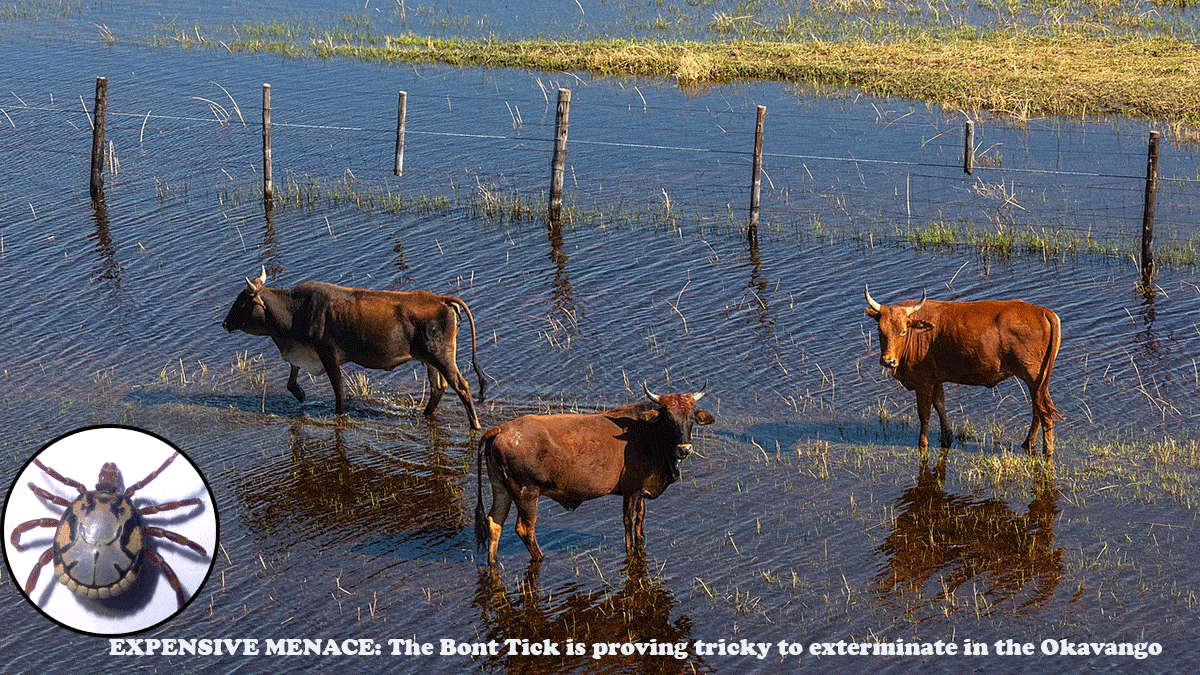Govt dips deep into Cattle Slaughter Levy for help
Eight years after they first reared their ugly heads in the western fringes of the Okavango Delta, the bont tick (Ambloyoma) and Senkobo (dermatophytosis) continue to bite the Ministry of Agriculture (MoA) where it hurts: in the pocket!
Updating the full council meeting in Maun last week, newly elected council chairperson, Itumeleng Kelebetseng revealed the problem is so widespread that the Ministry has had to dip into other levies for financial assistance, as the tick continues to spread across the district and to areas far from the Delta.
“The Ministry has been authorised to use P3.2 million from the Cattle Slaughter Levy fund to upscale the campaigns to cover more extension areas,” disclosed Kelebetseng, warning the outbreak will surely eat up much of that budget as procurement does not come cheap.
“There has been a challenge in the procurement and supply of oil-based pour dip which are ordinarily supplied in one litre packets instead of the more economical 20 litre containers and antibiotics,” he said.
The bont tick and senkobo were initially reported in Habu, Nokaneng, Tubu and Gumare in 2015.
Despite concerted dipping and antibiotic treatments campaigns at the time, the condition is said to have persisted, subsiding after protracted dipping campaigns only to resurge sooner afterwards.
Kelebetseng noted resurgences were often due to failure by farmers to continue the dipping effort when official campaigns are stopped.
“The condition eventually spread to the northern parts of the Delta, Eretsha and Gunotsoga, and has recently appeared in the Eastern parts of the Okavango in the Shorobe area and some Maun West crushes,” he further explained.
Sightings of the dreaded bont tick have been reported in areas more distant from the Delta, including Makalamabedi.
According to Kelebetseng, contributing factors for the recurrence and spreading, include relocation of animals by farmers fleeing the outbreak, spontaneous movement of cattle in response to flooding cycles of the delta, treatment and dipping default.
So far a total of: 5, 223 cattle, 208 sheep and 8, 227 goats have reportedly been dipped by farmers under Department of Veterinary Services supervision while a total of 2, 406 cattle, and one lucky goat are said to have been treated with antibiotics from April to May 2023.
Meanwhile, the Ministry is currently carrying out joint dipping campaigns in affected extension areas around the Okavango including: Gumare, Beetsha, Eretsha, Shorobe, Maun West, Nokaneng, Etsha6 and Tubu.
“The objective is to capacitate the farmers to do own dipping and animal treatments through hands on demonstration,” stressed Kelebetseng.





